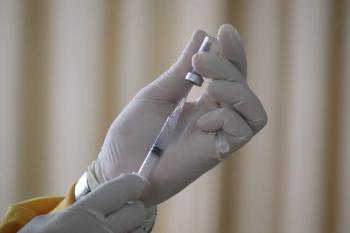
Providers Need to Consider Their Own Biases in PrEP Prescribing
Concerns of at-risk patients forgoing condoms may be driving the reluctance of some clinicians to prescribe the preventive regimen.
Although the US Centers for Disease Control and Prevention’s (CDC) guidelines for clinicians affirm that pre-exposure prophylaxis (PrEP) is safe and effective and should be considered for people at substantial risk of acquiring HIV, a large gap exists between the number of people at risk and the number of people taking PrEP. According to the CDC, in 2015 approximately
The problem, said the investigators, is that providers may fear that prescribing PrEP will encourage patients to forego condoms or take on more sexual partners, thereby increasing their risk of sexually transmitted infections. Although these scenarios may occur, the investigators insist that this risk compensation is not a good enough reason for clinicians to avoid offering PrEP to those who would most benefit from it.
“I think we need to be proactive about changing moralistic attitudes to[ward] PrEP,” Julia Marcus, PhD, MPH, assistant professor in the department of population medicine at Harvard Medical School and an author of the column, told Contagion®. “We’ve made great progress on improving healthcare for LGBT people, but there are still biases related to sexual and gender minorities, even among providers.”
Dr. Marcus and her colleagues maintain that people who use PrEP have not experienced an increase in HIV transmission levels. Infection with other STIs is possible, they acknowledge, but regular care can ensure quick detection and treatment. Their concern is that clinicians are underinformed about just how much of a difference PrEP can make for its users. PrEP offers heterosexual serodiscordant couples the ability to conceive a child without transmitting the virus, and it can offer women who suffer from intimate partner violence some peace of mind.
“We’re also starting to see the more psychological benefits of PrEP, including reduced anxiety, increased intimacy and pleasure, and better sexual satisfaction,” said Dr. Marcus. “The numerous benefits of PrEP for sexual health need to be highlighted as part of provider education about PrEP.”
The Harvard team put forth 3 initiatives that they say can return the focus to
“For example, if it’s more important to a patient to have condomless sex than remain STI free, providers should offer PrEP but also let patients know about the importance of frequent STI screening and treatment,” said Dr. Marcus.
Third, clinician training should stress the importance of recognizing and minimizing personal biases and increasing empathy when dealing with patients, particularly when it comes to discussing sexual health.
Dr. Marcus said her team is engaging in a multitude of research projects that will help more eligible patients receive PrEP, and they’d be interested in teaming up with agencies that could help reform guidelines that will reflect their proposed initiatives.
Newsletter
Stay ahead of emerging infectious disease threats with expert insights and breaking research. Subscribe now to get updates delivered straight to your inbox.















































































































































































































































































